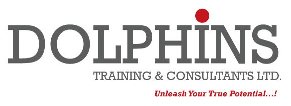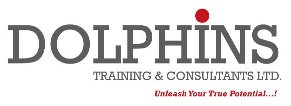
Could it be that our lives and careers are simply a reflection of our Words?
►Is the difference between a millionaire and a billionaire the words they know and use?
►Could the difference between a happy person and depressed person simply be the words they chanted to themselves?
Through thousands of pitches, I've found that fewer that 5% tell a great traction story.
Here are 10 tips that can help.
But first, let's get one thing straight - this is the only thing that matters to investors:
Venture investors invest in momentum. Traction is your story of momentum. It's told through quantified evidence of market demand for your product.
Here we go.
1) Compress your X Axis
The X axis is how long you've been working. The shorter, the better. Consider two startups below, both at the same number of users:
As an investor, who would you bet on? Blue, of course, because they've moved faster. So as a startup, how can you show that you're moving fast? Set reference points to effectively shorten the period.
Consider these two messages, for the same consumer web product:
"We started in 2008, and have 5000 users."
Here, an investor's thinking: '5000 users/36 months = painfully slow growth.'
"We started to experiment in 2008. We built the alpha of our current product in late 2010, and just launched the beta in February. We already have 5000 users."
Here, she's likely to think 'they took awhile to find the right fit, but now they're moving fast - 5000 users in beta is pretty good!'
Same progress, different message. Psychologically, you're anchoring a better reference point in their minds. In the second example you're anchoring them around the beta launch, not the beginning of your startup.
More examples:
"We started experimenting with this in 2008, and took a year to understand the space. Last September we quit our jobs to build this full time. Since then, we've built the alpha and then launched a second beta version, now with 5000 users."
That's anchoring them around the point that the team fully committed.
"We started experimenting in 2008, and built a couple iterations of the product. We found product-market fit with this version in August, and are now in beta, with 5000 users."
That's anchoring around this product version.
2) Choose Your X Axis
If you're adventurous try another X axis. Sales cycles can work where there's a slow, well-known sales cycle, like education. For example:
"Adoption is doubling every four months."
That's pretty good, but this is better:
"Adoption is doubling every term."
That's better because there's probably only acquisition potential each new term, and you're doubling users at every opportunity.
With very early products you can use product iteration. It works best with engagement or conversion numbers:
"We're currently converting 1.2% to paid users."
That's okay, but I'd love to hear how that has changed:
"We were converting 0.3% to paid users in the first product iteration. We raised that to 0.6% with the second iteration, and our current version is converting at 1.2%."
Here your X axis is product versions. This creates a nice trend line, and shows an investor that you're learning and improving. I find this works well with accelerator startups, who are early but move quickly. It's not traction in the true form (market demand), and shouldn’t displace a core metric, but it does show that your team can learn and execute.
3) Lower Expectations
You may want to set expectations low, and then exceed them. The most obvious example is when you’re in beta - say it!
"We have 200 users."
That's weak.
"We're in closed beta, and have 200 users."
That's better. You've set the investor's expectations low with a closed beta, so 200 seems normal. Now for bonus points, slip in some evidence of greater demand:
"We're in closed beta with 200 users, but each user is inviting on average 4.5 new users, and our waiting list is over 1000."
Holy crap. The new message: there are only 200 users now, but they're going crazy, and once they open you up it'll explode!
Another example I like, with product discovery:
"Before we even built the back end, we put an embarrassingly simple site up, just to see if there was any interest. We were blown away by the response - 200 users in the first week!"
Lower their expectations on the product side, then exceed it with the user response. (Some of the coolest products began with faked back ends.) This hints at product-market fit before you even had a real product.
And finally, set expectations by characterizing your users. This works best for enterprise or B2B startups, where customers are more difficult to win and have more value than consumer web.
"We have 400 customers, all of which are SMBs and have a projected lifetime value of $1500."
If you're speaking to an investor more familiar with consumer internet, that will put it in perspective.
4) Choose Your Y Axis
Broadly, I find traction most convincing in the following order:
- Profitability
- Revenues
- Active users
- Registered users
- Engagement
- Partnerships/clients
- Traffic
But this changes depending on your product and market. Some examples that might work:
E-commerce: revenue growth, average sales or gross margins, customers, average return visits per customer, units moved, and some industry specific numbers.
Consumer internet: user numbers, engagement of those users (number of questions or answers, photo uploads, time on site, whatever is relevant), virality (average new invites per user, waiting lists, etc.) or partnerships (brands signed on, stores engaged, etc.).
SaaS for small businesses: revenues, conversion to paid customers, registered users, cost of customer acquisition + lifetime customer value, signed distribution partners, or some quantifiable evidence of value to customers.
Enterprise: revenues, number of enterprise customers/clients, average contract size (growing?), qualified sales pipeline. Try to find some downstream value add example, say that your product engages X of their staff or customers, or saves them Y % on marketing costs while improving results.
Pick the metrics that best tell the story of your momentum. There are many options - be imaginative.
5) Use Absolute and Growth Numbers
Growth is key. You always want to tell that momentum story. Consider the following:
Red is powerful. Blue is crap. So when you’re describing your traction, use absolute numbers and growth numbers to communicate momentum. Consider:
“We have 10K users.”
OK. That’s not bad, but there’s little context.
“We have 10K users, growing at 25% per month.”
That’s more exciting.
My sense is that for most metrics, less than 10-15% growth per month is uninteresting.
6) Tell a Story of a Customer
This technique works best for B2B or enterprise-related companies who are early in their progress.
“We first started a pilot with Superchain, in one of their branches and with 15 employees. We’ve now expanded to 5 branches and 200 employees, and added two additional services. Superchain has over 1000 branches across 5 states.”
This does two things: shows the value you’re providing to a customer, and hints at the opportunity.
7) Benchmark Against a Known Competitor
This technique is aggressive and should not be overused, but it can work. Two that I’ve seen:
“Our CTR is 3X that of Techcrunch.”
“Our stock turnover is nearly twice as fast as Amazon’s”
Use this technique sparingly and pick comps that are relevant to your business.
8) Annotate a Graph
This is a great way to tell a story concisely, and show how your inputs have resulted in improvements in growth.
It seems to work well for early startups, especially those in accelerators (they move fast).
9) Using Testimonials as Traction
Don’t.
Even shitty startups have glowing testimonials, so it doesn’t differentiate.
10) Using Press as Traction
Don’t.
Even shitty startups can get good press. Repeat after me: ‘Getting on Techcrunch doesn’t mean that people want our product.’ ‘Getting on Techc...’ OK, you get it.
Notes
1) This guide has nothing to do with how you build your product or company. That’s up to you. So please don’t confuse traction with the metrics you’d use to help guide your business. I know nothing about those!
2) Some traction metrics will be necessary, whether you want to use them or not. If a metric is core to your business, don’t try to hide it - you’ll only appear evasive.
3.One can apply this concepts even on already established business or organization,in sales,marketing,project management,finance and more.
4.There is no number 4...
Good Luck
Compiled by
Makena Mugane
Business Relations
Dolphins Group.


.jpg)
.jpg)
.jpg)
.jpg)

.gif)


.jpg)




.jpg)
.jpg)


.jpg)